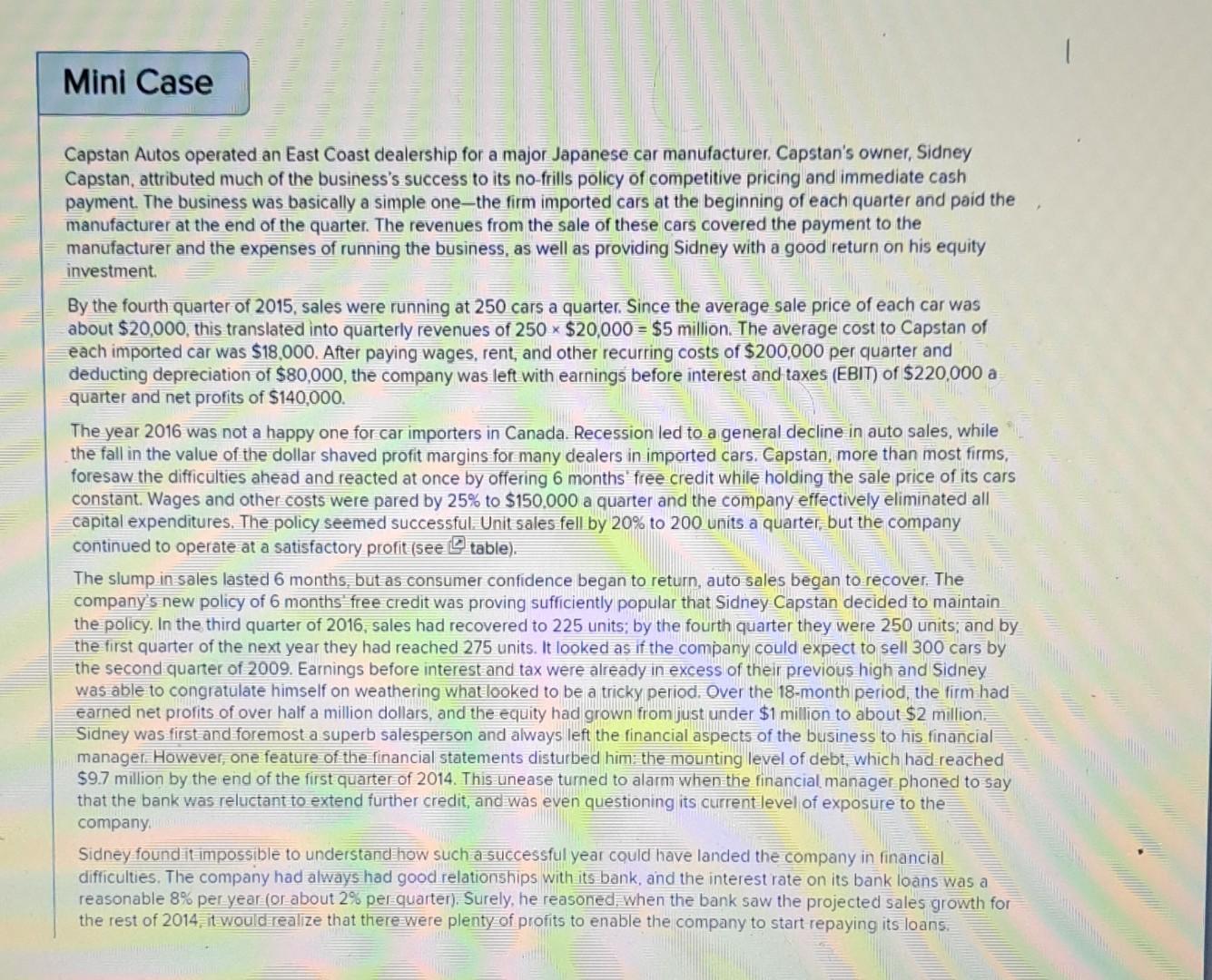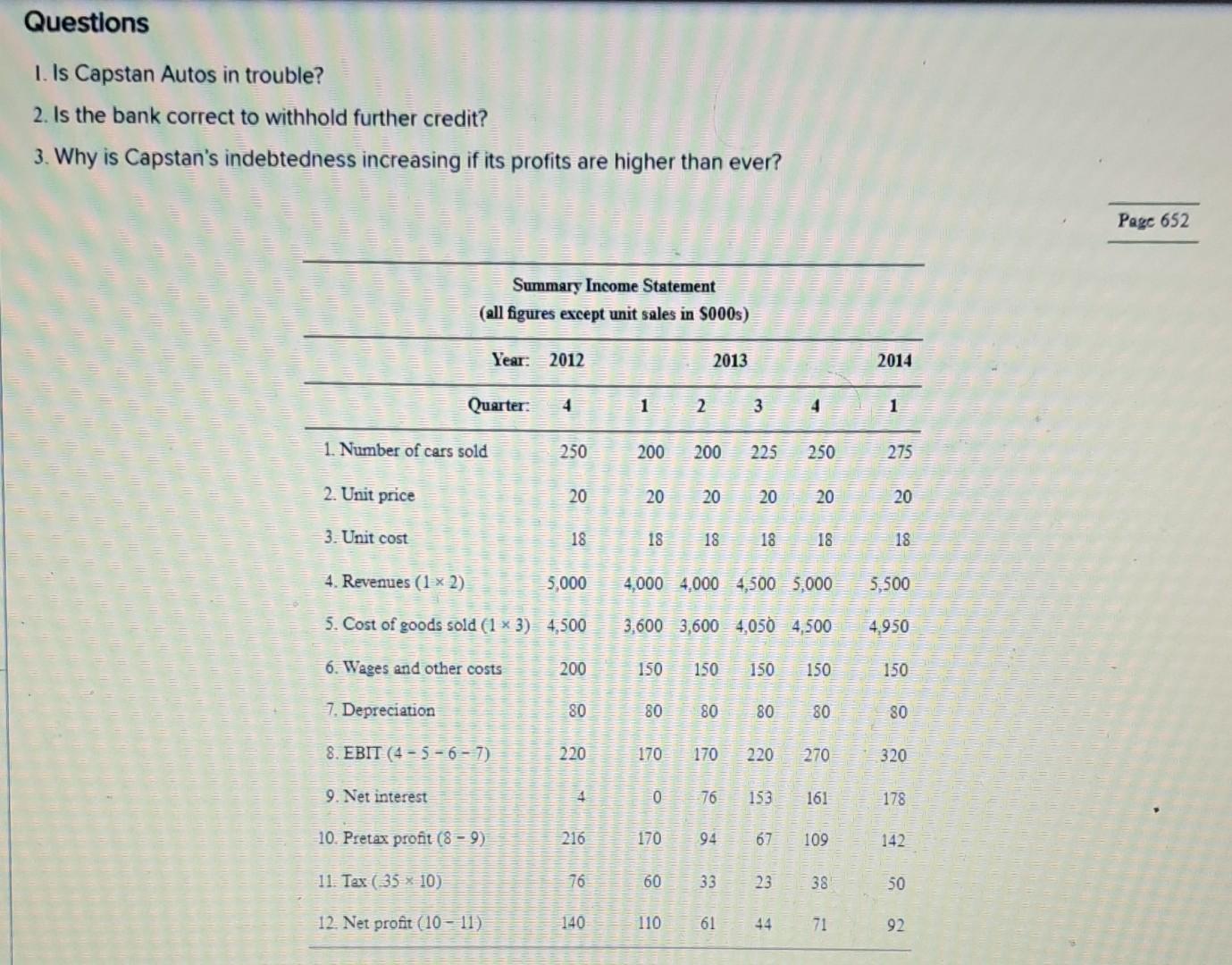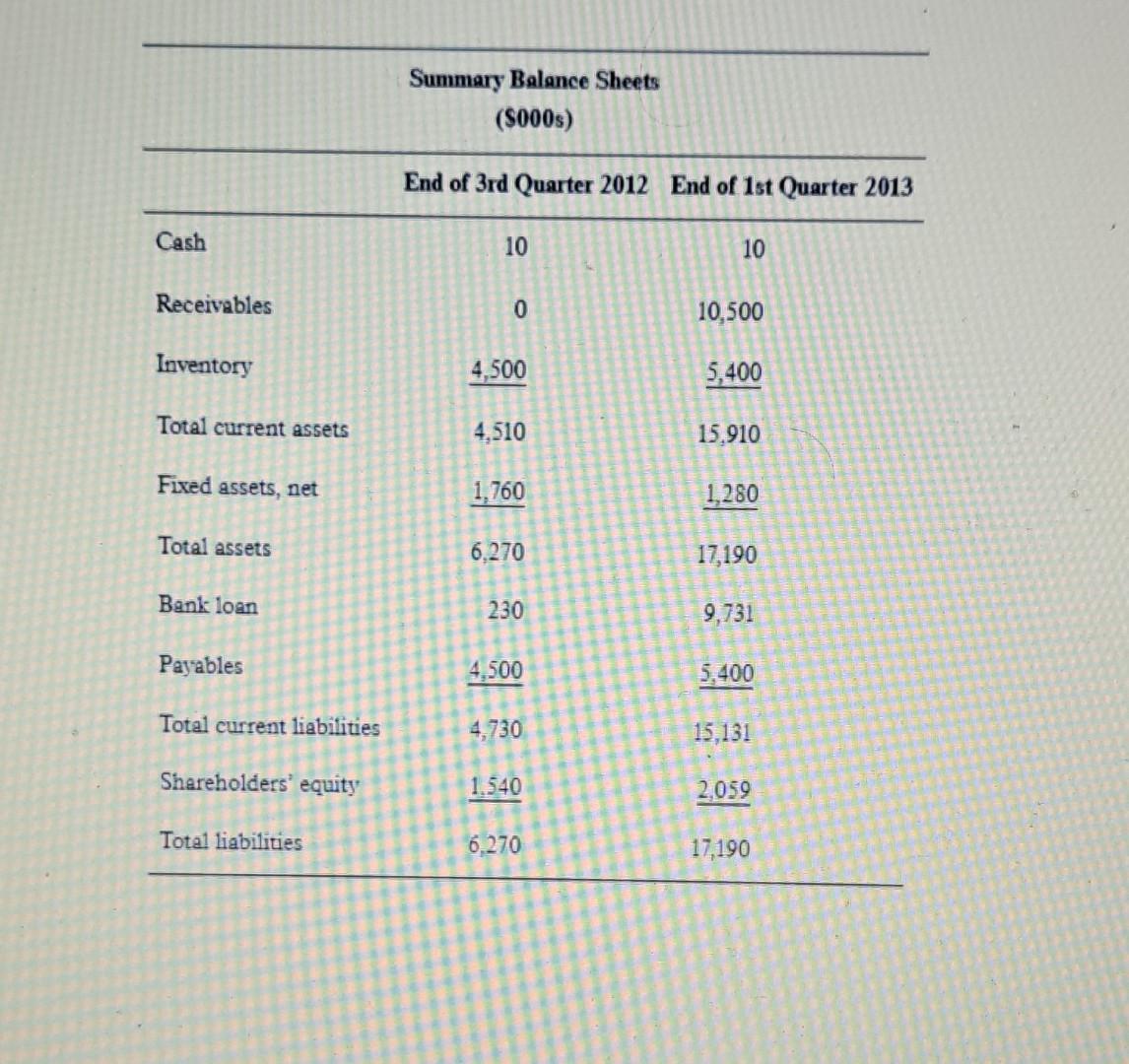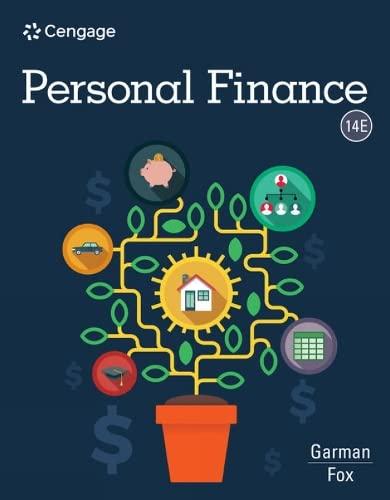Answered step by step
Verified Expert Solution
Question
1 Approved Answer
Capstan Autos operated an East Coast dealership for a major Japanese car manufacturer. Capstan's owner, Sidney Capstan, attributed much of the business's success to its



Capstan Autos operated an East Coast dealership for a major Japanese car manufacturer. Capstan's owner, Sidney Capstan, attributed much of the business's success to its no-frills policy of competitive pricing and immediate cash payment. The business was basically a simple one-the firm imported cars at the beginning of each quarter and paid the manufacturer at the end of the quarter. The revenues from the sale of these cars covered the payment to the manufacturer and the expenses of running the business, as well as providing Sidney with a good return on his equity investment. By the fourth quarter of 2015 , sales were running at 250 cars a quarter. Since the average sale price of each car was about $20,000, this translated into quarterly revenues of 250$20,000=$5 million. The average cost to Capstan of each imported car was $18,000. After paying wages, rent, and other recurring costs of $200,000 per quarter and deducting depreciation of $80,000, the company was left with earnings before interest and taxes (EBIT) of $220,000 a quarter and net profits of $140,000. The year 2016 was not a happy one for car importers in Canada. Recession led to a general decline in auto sales, while the fall in the value of the dollar shaved profit margins for many dealers in imported cars. Capstan, more than most firms, foresaw the difficulties ahead and reacted at once by offering 6 months' free credit while holding the sale price of its cars constant. Wages and other costs were pared by 25% to $150.000 a quarter and the company effectively eliminated all capital expenditures. The policy seemed successful. Unit sales fell by 20% to 200 units a quarter, but the company continued to operate at a satisfactory profit (see [able). The slump in sales lasted 6 months, but as consumer confidence began to return, auto sales began to recover. The company's new policy of 6 months' free credit was proving sufficiently popular that Sidney Capstan decided to maintain the policy. In the third quarter of 2016, sales had recovered to 225 units; by the fourth quarter they were 250 units; and by the first quarter of the next year they had reached 275 units. It looked as if the company could expect to sell 300 cars by the second quarter of 2009. Earnings before interest-and tax were already in excess of their previous high and Sidney was able to congratulate himself on weathering what looked to be a tricky period. Over the 18 -month period, the firm had earned net profits of over half a million dollars, and the equity had grown from just under $1 million to about $2 million: Sidney was first and foremost a superb salesperson and always left the financial aspects of the business to his financial manager: However, one feature of the financial statements disturbed him: the mounting level of debt, which had reached $9.7 million by the end of the first quarter of 2014 . This unease turned to alarm when the financial manager phoned to say that the bank was reluctant to extend further credit, and was even questioning its current-level of exposure to the company. Sidney found it impossible to understand how such a successful year could have landed the company in financial difficulties. The company had always had good relationships with its bank, and the interest rate on its bank loans was a reasonable 8% per year (or-about 2% per-quarter). Surely, he reasoned, when the bank saw the projected sales growth for the rest of 2014 . It wouldrealize that there were plenty of profits to enable the company to start repaying its loans. Questions 1. Is Capstan Autos in trouble? 2. Is the bank correct to withhold further credit? 3. Why is Capstan's indebtedness increasing if its profits are higher than ever? \begin{tabular}{lcc} \hline & \begin{tabular}{c} Summary Balance Sheets \\ (S000s) \end{tabular} \\ \hline & \begin{tabular}{l} End of 3rd Quarter 2012 \\ Cash \end{tabular} & End of 1st Quarter 2013 \\ \hline Receivables & 10 & 10 \\ Inventory & 4,500 & 10,500 \\ Total current assets & 4,510 & 5,400 \\ Fixed assets, net & 1,760 & 15,910 \\ Total assets & 6,270 & 1,280 \\ Bank loan & 230 & 17,190 \\ Payables & 4,500 & 9,731 \\ Total current liabilities & 4,730 & 5,400 \\ Shareholders' equity & 1,540 & 15,131 \\ Total liabilities & 6,270 & 2,059 \\ \hline \end{tabular}
Step by Step Solution
There are 3 Steps involved in it
Step: 1

Get Instant Access to Expert-Tailored Solutions
See step-by-step solutions with expert insights and AI powered tools for academic success
Step: 2

Step: 3

Ace Your Homework with AI
Get the answers you need in no time with our AI-driven, step-by-step assistance
Get Started


